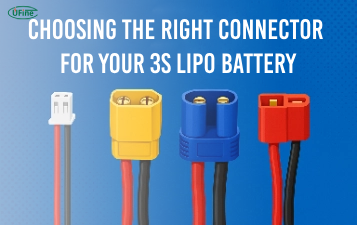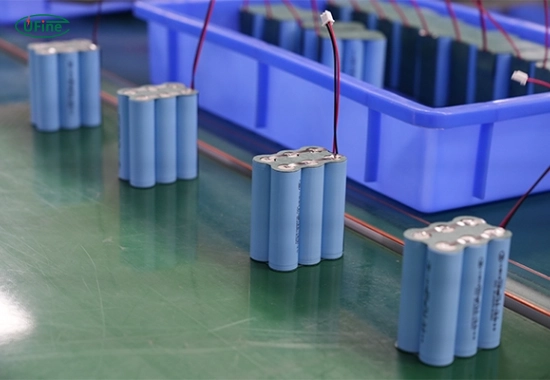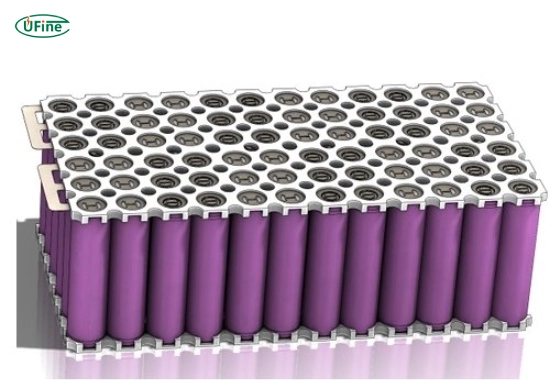In the world of batteries, terminology can often feel overwhelming, especially if you’re new to understanding how electrical components work. One term frequently used in discussions about lithium-ion batteries, such as the commonly used 18650 cells, is “20S”. You’re in the right place if you’ve ever wondered what “20S” means in a 20S 3.7V 18650 battery.
This article will break down the concept of series configuration, explain how it impacts battery performance, and highlight why this terminology is crucial for anyone working with battery packs. By the end of this guide, you’ll have a comprehensive understanding of the relationship between “20S,” voltage, and battery efficiency.
Part 1. What does ’20S’ mean in a 20S 3.7V 18650 battery?
“20S” refers to a series configuration of 20 battery cells. Specifically, it indicates that 20 individual 18650 battery cells are connected in series to form a battery pack. When you connect batteries in series, their voltage increases while the capacity (measured in ampere-hours or Ah) stays the same as a single cell.
For instance, an 18650 cell typically has a nominal voltage of 3.7 volts. When 20 cells are connected in series, the total voltage becomes:
- 3.7V × 20 = 74V
Thus, a 20S 3.7V 18650 battery pack has a nominal voltage of 74 volts. This series configuration is used in applications requiring high voltage, such as electric vehicles, power tools, and large-scale energy storage systems.
Part 2. What are 18650 batteries?
Before diving deeper into “20S,” let’s first understand 18650 batteries. These are a type of rechargeable lithium-ion battery commonly used in modern electronics due to their compact size, high energy density, and reliability.
- Dimensions: The name “18650” comes from the battery’s size—18mm in diameter and 65mm in length.
- Voltage: Each cell has a nominal voltage of 3.7V and a fully charged voltage of 4.2V.
- Capacity: Typically ranges between 2000mAh and 3500mAh, depending on the model.
18650 batteries are the building blocks of larger battery packs, which is why understanding their configurations, such as “20S,” is critical.
Part 3. What is a series configuration in batteries?
A series configuration involves connecting one cell’s positive terminal to the next’s negative terminal. This setup increases the battery pack’s total voltage while keeping the capacity (Ah) constant.
Key characteristics of a series configuration:
- Voltage adds up: The total voltage is the sum of all the cell voltages.
- Current remains constant: The current capacity is the same as a single cell.
- Applications: Used in systems requiring high voltage, such as EVs and industrial machinery.
For example, the voltage in the 20S 18650 pack increases to 74V, but the capacity remains the same as that of a single 18650 cell.
Part 4. How does a series configuration differ from a parallel configuration?
While a series configuration increases voltage, a parallel configuration increases capacity. In a parallel setup, all positive terminals are connected, and all negative terminals are connected.
Comparison of series vs. parallel:
| Configuration | Voltage | Capacity (Ah) | Use Case |
| Series | Adds up | Remains constant | High-voltage applications |
| Parallel | Remains constant | Adds up | High-capacity applications |
In many battery packs, series, and parallel configurations are combined to achieve the desired voltage and capacity.
Batteries in Series vs Parallel: Which is Better?
Part 5. Why is ’20S’ important in battery pack design?
The “20S” configuration is critical in battery pack design because it determines its total voltage output. Voltage plays a key role in:
- Power delivery: Higher voltage allows the battery to deliver more power for demanding applications, such as electric vehicles.
- Compatibility: Engineers design devices and systems to work with specific voltage ranges.
- Efficiency: High-voltage systems often operate more efficiently by reducing energy losses during transmission.
For example, a 20S pack is ideal for electric vehicles that require high voltage to power their motors effectively.
Part 6. How does the ’20S’ configuration impact battery performance?
The 20S configuration directly impacts the battery pack’s performance by influencing its voltage, power output, and efficiency. Here’s how:
1. Voltage Output
As mentioned earlier, a 20S configuration produces a nominal voltage of 74V, which can increase to 84V when fully charged (4.2V × 20). This high voltage is essential for powering high-demand systems.
2. Power Delivery
Power is calculated as:
- Power (W) = Voltage (V) × Current (A)
The 20S configuration’s high voltage allows for greater power output, making it suitable for devices that require a lot of energy.
3. Energy Storage
The total energy stored in a 20S pack is determined by its voltage and capacity. For instance, a 20S pack with 3Ah cells will have:
- Energy (Wh) = Voltage (V) × Capacity (Ah)
- = 74V × 3Ah = 222Wh
This energy storage capability makes 20S packs ideal for long-lasting applications.
Part 7. What are the safety considerations for a 20S 3.7V 18650 battery?
While 20S configurations are highly efficient, they require careful management to ensure safety. Lithium-ion batteries are sensitive to overcharging, overheating, and physical damage. Here’s how to stay safe:
- Battery Management System (BMS): A reliable BMS monitors and balances the voltage of individual cells.
- Proper charging: Always use a charger designed for the specific voltage of your battery pack.
- Avoid over-discharge: Discharging below the minimum safe voltage can damage the cells.
By following these precautions, you can ensure the longevity and safety of your 20S battery pack.
Part 8. Applications of a 20S 3.7V 18650 battery
The high voltage and energy efficiency of a 20S configuration make it suitable for a variety of applications, including:
- Electric vehicles (EVs): Provides the power needed to run electric motors efficiently.
- Energy storage systems: These are used in solar power systems to store energy for later use.
- Power tools: Delivers consistent power for demanding tools like drills and saws.
- Industrial equipment: Powers heavy machinery requiring high voltage.
Part 9. How can a 20S 3.7V 18650 battery be maintained for longevity?
To maximize the lifespan of your 20S battery pack, follow these tips:
- Charge regularly: Avoid letting the battery sit at a low charge for extended periods.
- Store properly: Keep the battery in a cool, dry place away from direct sunlight.
- Inspect for damage: Check for signs of swelling or leakage regularly.
- Use quality chargers: Only use chargers designed for lithium-ion batteries.
Part 10. FAQs
-
What does “20S” mean in a battery pack?
“20S” means that 20 cells are connected in series, resulting in a higher total voltage. -
What is the voltage of a 20S 3.7V battery?
The nominal voltage is 74V, and the fully charged voltage is 84V. -
Can I mix different types of 18650 cells in a 20S pack?
No, mixing different cells can lead to imbalance and potential safety risks. -
What is the purpose of a Battery Management System (BMS) in a 20S pack?
A BMS ensures proper voltage balancing, prevents overcharging, and protects the battery from damage. -
What are the main applications of a 20S 18650 battery?
They are commonly used in electric vehicles, energy storage systems, and power tools.
Related Tags:
More Articles

Choosing the Right Connector for Your 3S LiPo Battery
Choosing the right 3S LiPo connector depends on current, space, and use. Learn the pros and cons of XT60, JST, EC3, and more.
3S LiPo Battery Guide: From Voltage Basics to Full Charge
A 3S LiPo battery offers high power in a lightweight form, ideal for RC, drones, and FPV. Learn voltage basics, charging tips, and safety.
What is Airsoft LiPo Battery Lifespan?
Discover how long airsoft LiPo batteries last, what affects their runtime and lifespan, and how to extend their performance in the field.
Lithium Battery Charge Controller: Is It Essential?
Learn whether a lithium battery charge controller is necessary, how it works, and when it's essential in solar and off-grid power systems.
How to Correctly Solder Multiple Lithium Batteries Together?
Learn step-by-step how to solder lithium batteries in series or parallel safely and effectively with this detailed, hands-on guide.





